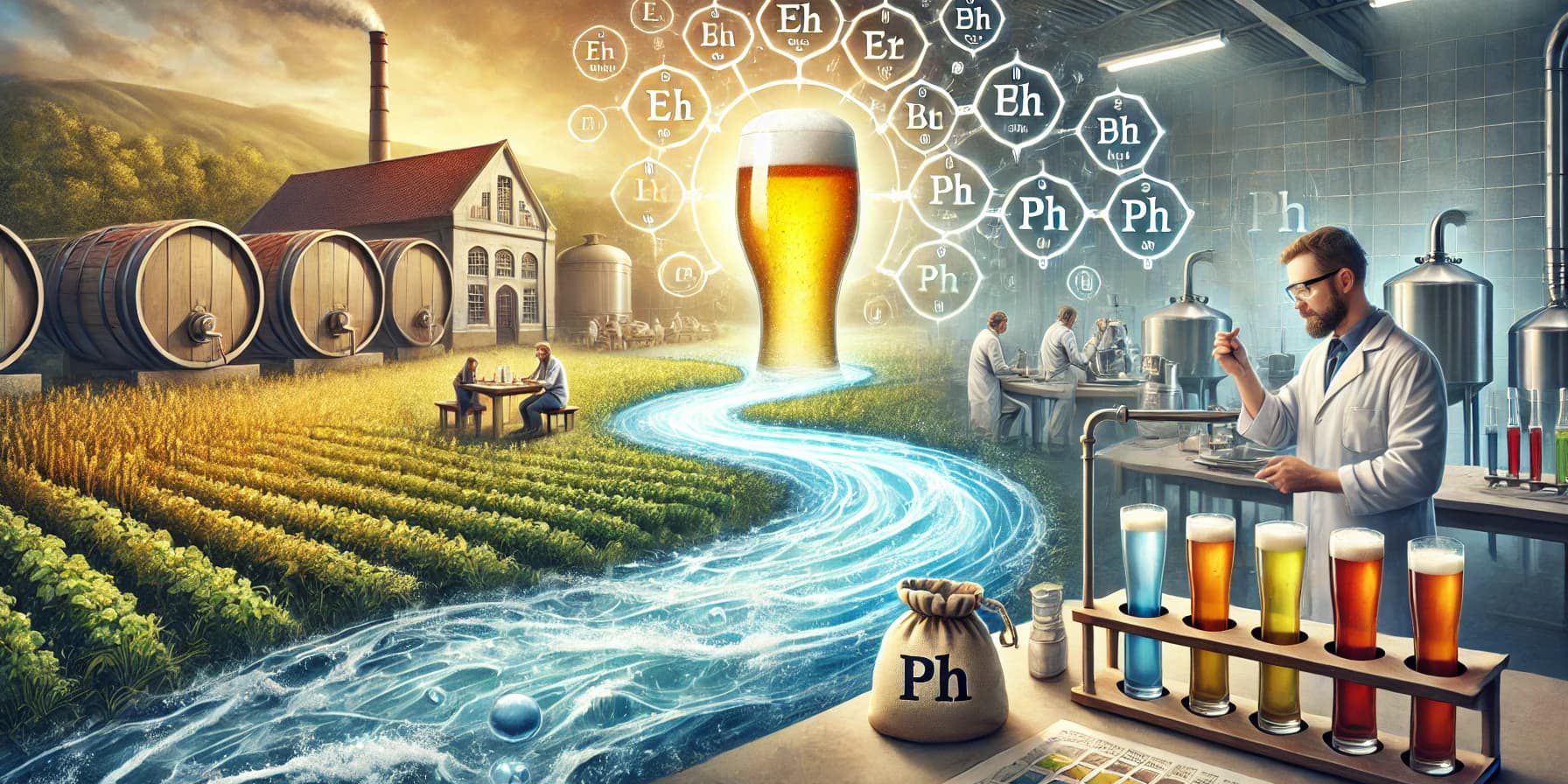When you think about beer, you probably picture hops, barley, or yeast—but rarely water. Yet, water isn’t just a neutral backdrop for the other ingredients. It’s the foundation of beer, influencing flavour, mouthfeel, fermentation, and even the style of beer itself.
In fact, water makes up a staggering 90–96% of beer. That might sound surprising, but this dominant ingredient has a surprisingly large impact. Historically, the mineral makeup of local water sources led to certain beer styles emerging in specific regions: think Pilsners from Plzeň or stouts from Dublin. Each locale’s unique water profile shaped its beer identity long before brewers understood the science behind it.
So, what makes brewing water so important, and how can brewers manage it effectively?
Understanding Brewing Water Composition
At its core, brewing water isn’t just H₂O. It’s a cocktail of dissolved minerals and ions, each of which plays a role in fermentation, yeast health, pH balance, and flavour development. Here are the key players:
- Calcium (Ca²⁺): Helps precipitate proteins, stabilise enzymes, and lower mash pH.
- Magnesium (Mg²⁺): Aids yeast health at low levels but becomes bitter in excess.
- Sodium (Na⁺): Enhances mouthfeel and sweetness but can taste salty if overdone.
- Chloride (Cl⁻): Accentuates malt sweetness and gives a fuller body.
- Sulfate (SO₄²⁻): Sharpens hop bitterness and gives a drier finish.
- Bicarbonate (HCO₃⁻): Buffers mash pH, important for darker beers but undesirable in pale styles.
These minerals affect beer in a variety of ways. Calcium and magnesium, for instance, are critical for enzyme activity and yeast health. Sulfate and chloride create a balancing act between hop-forward dryness and malt-forward sweetness. Bicarbonate helps stabilize the pH, especially in dark beers where roasted malts lower acidity.
Water’s Influence on Beer Styles
Water chemistry played a significant role in defining regional beer styles long before modern brewing techniques allowed manipulation. For example:
- Burton-on-Trent (UK): High sulfate levels enhanced hoppy pale ales.
- Dublin (Ireland): Alkaline water suited dark, roasted malts—ideal for stouts.
- Plzeň (Czech Republic): Extremely soft water gave rise to crisp, delicate Pilsners.
This wasn’t coincidental. The chemistry of the local water often determined what styles could be successfully brewed. Today, understanding and replicating these profiles allows brewers anywhere to make world-class versions of any style.
Sulfate vs. Chloride: A Balancing Act
Two of the most talked-about ions in water chemistry are sulfate and chloride. The ratio between them can dramatically shift the perception of a beer:
- High Sulfate / Low Chloride: Promotes hop bitterness and crispness (ideal for IPAs).
- High Chloride / Low Sulfate: Emphasises malt smoothness and body (ideal for malty ales, porters).
Striking the right balance here can transform a decent beer into a great one.
Managing Your Brewing Water
If you’re serious about brewing, managing your water is essential. Here’s a step-by-step approach:
- Get a Water Report: Understand what’s in your tap or source water. Local utilities often provide detailed reports, or you can send samples for analysis.
- Decide to Treat or Dilute: If your water is too hard or has unwanted minerals, consider diluting with distilled water or using reverse osmosis (RO) water.
- Adjust for Style: Use brewing calculators (like Brewer’s Friend or BeerSmith) to match your water to the desired profile for your beer style.
- Add Mineral Salts as Needed: Examples include:
- Gypsum (CaSO₄): Boosts calcium and sulfate.
- Calcium Chloride (CaCl₂): Increases calcium and chloride.
- Baking Soda (NaHCO₃): Raises bicarbonate and pH (used cautiously).
- Epsom Salt (MgSO₄): Adds magnesium and sulfate.
- Gypsum (CaSO₄): Boosts calcium and sulfate.
- Control pH: Use pH strips or meters to monitor mash pH. Ideal mash pH ranges between 5.2 and 5.6. Adjust with acid additions or baking soda as needed.
Common Mistakes to Avoid
- Using Untreated Tap Water Blindly: Municipal water often contains chlorine or chloramine, which can produce off-flavours. Always filter or treat.
- Ignoring pH: A mash pH that’s too high or low can ruin efficiency, taste, and clarity.
- Overcorrecting: Adding too many salts without calculating the effects can throw your beer out of balance.
Water might seem like the simplest ingredient in beer, but it’s one of the most important—and one of the most controllable. By understanding the composition of your brewing water and learning how to adjust it, you can dramatically improve the quality, consistency, and character of your beer. Whether you’re brewing a clean, hoppy IPA or a smooth, rich stout, your water chemistry is the key to unlocking its full potential.






